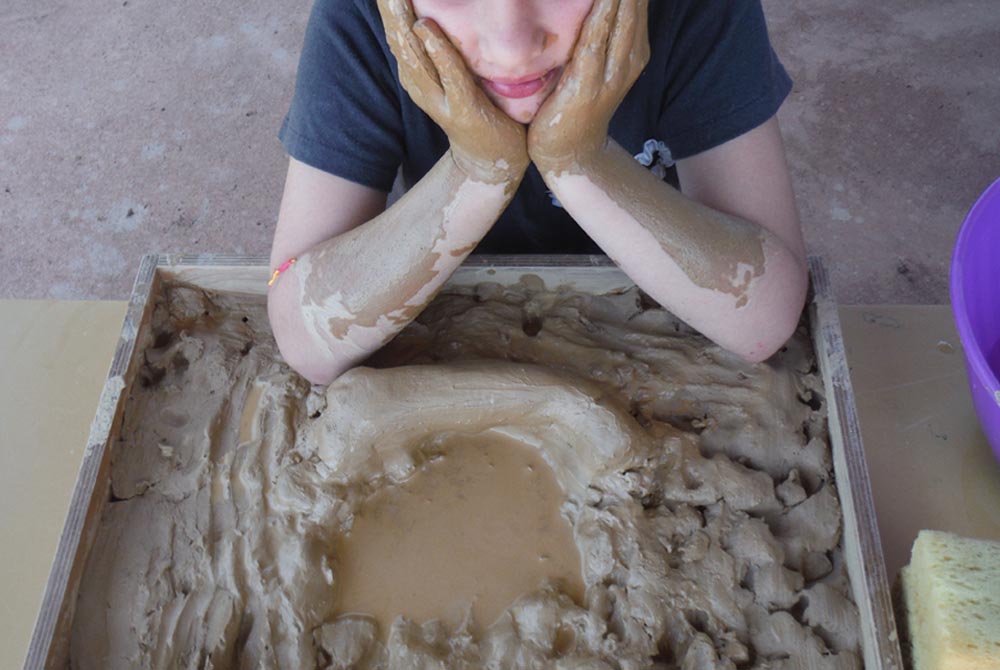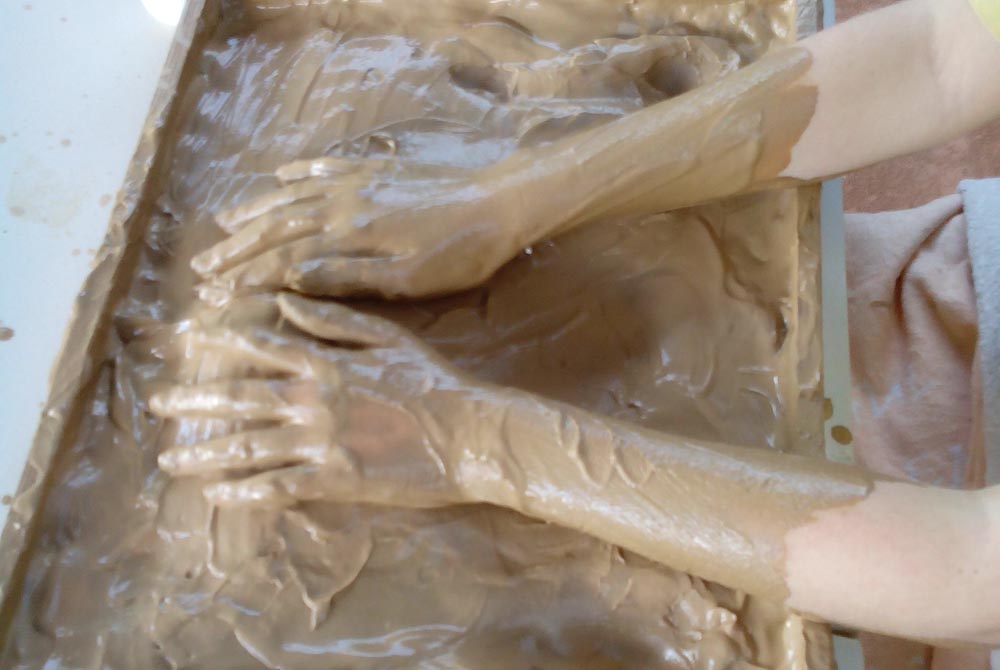Clayfield Therapy, What is it?
Clay Field is a sensorimotor art therapy for children, adolescents and adults with the focus on the sense of touch and the movement of the hands.
Clay Field therapy allows us to grow into our best selves.
Clay Field is a journey of discovery using your hands, a box of clay on a table and a bowl of warm water. There will be no finished product to take home, no art work to show friends and no sculpture to be fired.
This simple setting offers a symbolic ‘world’ for the hands to explore and clay is the ideal substance for exploration of the unknown.
One’s hands, in their ability or inability to ‘handle’ the medium, tell one’s life story.
Touch is a fundamental human
Our hands remember.
The movement of the hands combined with sensory perception can lead to a profound sense of resolution with lasting therapeutic benefits. You can rely on your hands to help give added meaning to your life through this tactile experience.
Healing Stories
“Doing clayfields helps me to express my feelings and helps me do things that I don’t like to talk about. After a clayfield I feel like I am not boxed up with feelings anymore and I don’t feel as angry with everyone and everything.”
“I like clayfield because I get to make what I want to make, get messy
and squish around. It makes me feel free to do anything.”
“I like clayfield because you get to do what you like with your own imagination. I love clayfield because it makes me feel like I am part of the outback when I squeeze it in my hands.”
Clayfield Therapy History
Developed in Germany by Professor Heinz Deuser in the 1970’s, it is widely used to facilitate trauma healing in Europe.
“Work at the Clay Field returns us to our beginning, to the core learning situations of touch, of the haptic* world experience. In order to be able to express ourselves, we must first gain physical certainty to ourselves.”
“The intense tactile experience of working with clay allows the therapist to work through early attachment issues, developmental setbacks and traumatic events with the client in a primarily nonverbal way using a body-focused approach. The kineasthetic motor action of the hands combined with sensory perception can lead to a profound sense of resolution with lasting therapeutic benefits.”
Associated and working closely with Heinz Deuser, Cornelia is the founder and director of Institute of Sensorimotor Art Therapy and School of Initiatic Art Therapy based in Apollo Bay in Victoria.
Fees
- Clayfield $80 adult, $50 kids
- Fair trade fee relief negotiable upon application









